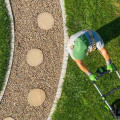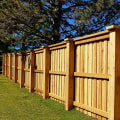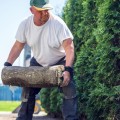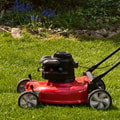Maintaining a healthy and attractive lawn requires consistent care and annual treatments, much like the regular updates you might undertake with Auckland home renovations to enhance your living space. Each year, there are several key actions you should take to ensure that your lawn remains in good condition, able to withstand the rigors of changing seasons, and continues to enhance the curb appeal of your property.
The first and perhaps most critical step is aeration. Aerating the lawn involves making small holes in the soil to allow air, water, and nutrients to penetrate the grass roots. This helps the roots grow deeply and produce a stronger, more vigorous lawn. The best time for aeration is during the growing season, when the grass can heal and fill in any open areas after soil plugs are removed. This process is especially important for lawns that experience heavy foot traffic, which can compact the soil and inhibit root growth.
Following aeration, overseeding is often recommended, particularly for lawns that look thin or bare. Overseeding introduces new grass seed to fill in bare spots and enhance the density and color of the lawn. It's essential to choose the right type of grass seed that matches the existing lawn and local climate conditions. The new seeds will benefit from the loosened soil created by aeration, which facilitates better seed-to-soil contact and improves germination rates.
Fertilization is another annual necessity for a healthy lawn. Providing your grass with the right nutrients at the right time is crucial for promoting lush, green growth. The specific timing and type of fertilizer depend on the grass species and the local climate, but generally, applications are recommended in the spring and fall. Spring fertilization helps kickstart growth after the dormant winter months, while fall fertilization helps strengthen the roots and prepare the grass for the cold ahead.
Weed control is also integral to lawn care, ensuring that unwanted plants do not overrun your grass. Pre-emergent herbicides are usually applied in the early spring to prevent weed seeds from germinating, while post-emergent herbicides can be used to tackle existing weeds. It's vital to use these products correctly to avoid damaging the grass and to adhere to the recommended safety guidelines to protect the environment and your health.
Irrigation is another aspect of lawn care that requires attention. Proper watering practices are essential to maintain a healthy lawn. Over-watering can lead to shallow root systems, while under-watering can stress the grass, making it more susceptible to disease and pests. The amount and frequency of watering will depend on the grass type, soil conditions, and weather patterns, but generally, it's best to water deeply and infrequently to encourage deep root growth.
In addition to these annual treatments, regular mowing is required to keep the lawn looking neat and tidy. The height at which you cut the grass can significantly affect its health; cutting too short can stress the grass and make it more prone to weeds and diseases. Each grass type has an optimal cutting height, and maintaining this throughout the growing season will help promote a healthy lawn.
Dethatching might also be necessary if a thick layer of thatch (dead grass and organic matter) accumulates on the soil surface, as it can prevent water, air, and nutrients from reaching the soil. Removing this layer can be critical for maintaining lawn health, particularly if the thatch layer exceeds half an inch.
Finally, monitoring for pests and diseases throughout the year can prevent small issues from becoming significant problems. Early detection and treatment can save a lot of effort and expense later on. Regular inspections of the lawn can help you spot signs of trouble early, such as discolored grass, bare patches, or the presence of pests.
In conclusion, maintaining a lawn requires a proactive approach, much like managing a home renovation project. Just as each step in a renovation, from planning to execution, is crucial for enhancing the value and functionality of a home, each part of lawn care plays a vital role in developing a healthy, resilient lawn. By aerating, overseeding, fertilizing, controlling weeds, irrigating properly, mowing at the correct height, dethatching as needed, and monitoring for pests and diseases, you can ensure that your lawn remains a beautiful and valuable part of your home environment.






